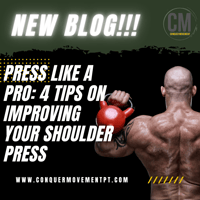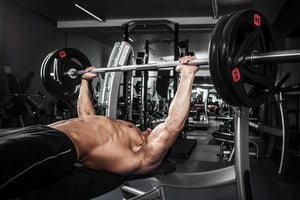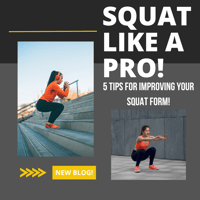Press Like a Pro: 4 Tips for Improving Your Shoulder Press
Deadlift Technique: The Secrets to Lifting More Weight and Avoiding Injury - Part 2
In part 1 of our deep dive into deadlift technique, we explored key cues like engaging your foot tripod, core and lats to enhance your performance and protect your body from injury. But there's more to mastering the deadlift than those foundational principles. In part 2, we'll uncover three additional cues that can elevate your deadlift game, helping you lift more weight with better efficiency while minimizing the risk of injury.
1. Maintain a Neutral Neck Position
One often-overlooked aspect of deadlift form is neck positioning. While many lifters focus on their back, hips, and legs, the position of the neck can play a crucial role in both performance and injury prevention. Maintaining a neutral neck throughout the lift helps ensure proper spinal alignment and reduces unnecessary strain on your neck and low back.
- Eye Gaze: Your eye gaze should follow the natural movement of your body. At the start of the lift, this means looking a few feet ahead of you on the floor. As you lift, your gaze should move slightly forward, but avoid looking straight ahead or up, which can cause your neck to hyperextend.
- Chin Position: Keep your chin tucked slightly, as if holding an egg under your chin. This helps maintain a neutral neck position and aligns your cervical spine with the rest of your back. Avoid jutting your chin forward or tilting your head back, which can compromise your spinal alignment.
- Spinal Alignment: Think of your spine as a single unit, extending from your tailbone to the top of your head. Maintaining a neutral neck ensures that your spine remains in a safe, strong position throughout the lift. This not only prevents neck strain but also enhances overall stability and force generation. Check out this video of a PVC hip hinge for more detail!
2. Drive the Floor Away
Rather than thinking about lifting the bar off the ground, reframe the movement in your mind: push the floor away with your legs. This mental shift can dramatically improve your force production and technique.
- Foot Positioning: Make sure your feet are solidly planted on the ground, with your weight distributed evenly across your foot tripod (heel, big toe, and little toe).
- Knee and Hip Synchronization: As you push the floor away, focus on extending your knees and hips at the same time. Avoid letting your hips rise faster than your shoulders, which can lead to a loss of power and potential injury. The movement should feel like a coordinated push, driving your body upwards while the bar follows.
- Maintain the Bar Path: Keep the bar close to your body as you drive upwards. Imagine it traveling in a straight line up your shins, over your knees, and up your thighs. This reduces the strain on your lower back and ensures efficient force transfer from the ground to the bar. For a refresher on how to keep the bar close to your body, check out this banded PVC drill!
3. Finish the Lift with Intent
The deadlift doesn’t end when the bar passes your knees; how you finish the lift is just as important as how you start it. A strong, intentional finish not only helps you complete the lift successfully but also sets the stage for a controlled descent, reducing the risk of injury.
- Lockout with Precision: As you reach the top of the lift, focus on squeezing your glutes to bring your hips forward. This hip extension should be powerful but controlled, avoiding hyperextension of the lower back. Think about standing tall and proud, with your shoulders back and your chest open.
- Shoulder Positioning: At the top, engage your lats by pulling your shoulder blades slightly down and back. This not only aids in stabilizing your upper body but also helps to create a more secure and stable lockout position.
- Controlled Descent: Don’t just drop the bar. Lower it with control by reversing the movement—hip hinge first, then bend your knees once the bar passes them. This controlled descent ensures that you maintain good form throughout the entire lift, protecting your back and setting you up for the next repetition.
Mastering the deadlift requires attention to detail and a commitment to refining your technique. By incorporating these new cues—maintaining a neutral neck position, driving the floor away, and finishing with intent—you’ll not only lift more weight but also safeguard your body against injury. Remember, every lift is an opportunity to perfect your form and build strength that translates into your athletic performance and daily life.
Thanks for reading!
In good health,
Dr. Eliza Cohen, PT, DPT, CPT, NTP
Conquer Movement - Wilmington, NC




